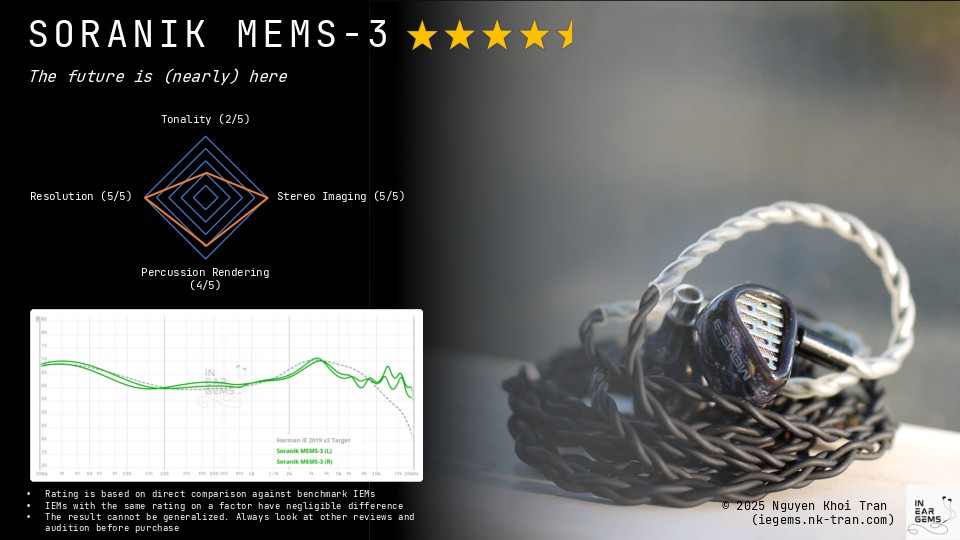Soranik MEMS-3 - The future is (nearly) here
Today, we look at one of the first IEMs with full-ranged xMEMS driver on the market, the Soranik MEMS-3
Forewords
- What I look for in an IEM is immersion. I want to feel the orchestra around my head, track individual instruments, and hear all of their textures and details. I’m not picky about tonality, as long as it does not make the orchestra, violin, cellos, and pianos sound wrong.
- I rate IEMs within with a consistent scale from 1 (Poor) to 3 (Good) to 5 (Outstanding). An overall ranking of 3/5 or above is considered positive.
- Ranking list and measurement database are on my IEM review blog.
- The terminology for subjective impressions in this review is based on the Audio Wheel for reproduced sound defined in the technical report ITU-R BS.2399-0
- This review is based on the Australian Head-Fi tour arranged by Soranik and @Damz89 (Thank you!). I have no affiliation with or financial interest in Soranik.
- The unit retails for US$1600 at the time this review was published. Unaffiliated link: Soranik Web Store
General Information

MEMS-3 is the second IEMs equipped with MEMS drivers from the Vietnamese boutique Soranik. It is available in both universal and custom moulded form factor (CIEM). Each side of this IEM contains one full-ranged xMEMS driver, one full-ranged dynamic driver, and one sub-woofer dynamic driver, all of which are housed within a 3D printed shell with open-back design. The star of the show is, of course, the full-ranged MEMS driver from the manufacturer xMEMS, which promises a significant leap in resolution and details due to the lightning-fast response of this new driver type. If you are curious about MEMS drivers in general, please have a look at my previous review article of HiBy Xeno where I went into more details and provided some references to follow up.
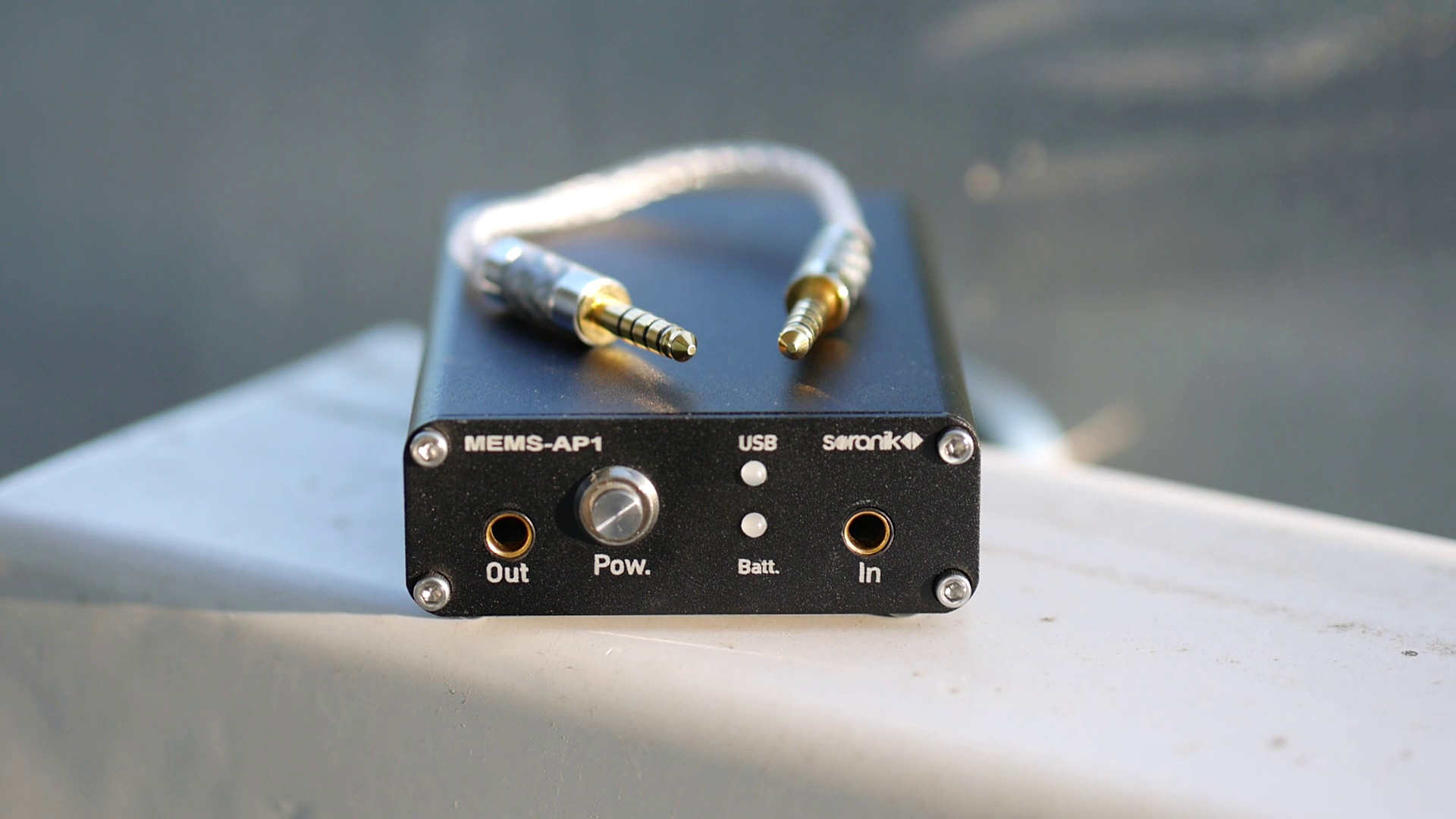
One critical point to notice is that MEMS-3 must be connected to an (included in the box) energizer unit boost the voltage of the signal enough for MEMS drivers to work. The energizer accepts an input analog signal via a 4.4mm jack, and output the amplified signal via another 4.4mm to the earpieces. You can use amplified signal from your dongle DAC or DAP as input to the energizer unit if you don’t have access to a 4.4mm lineout. In my tests, I found that MEMS-3 sounds better from the phone out than line out of my DAP.
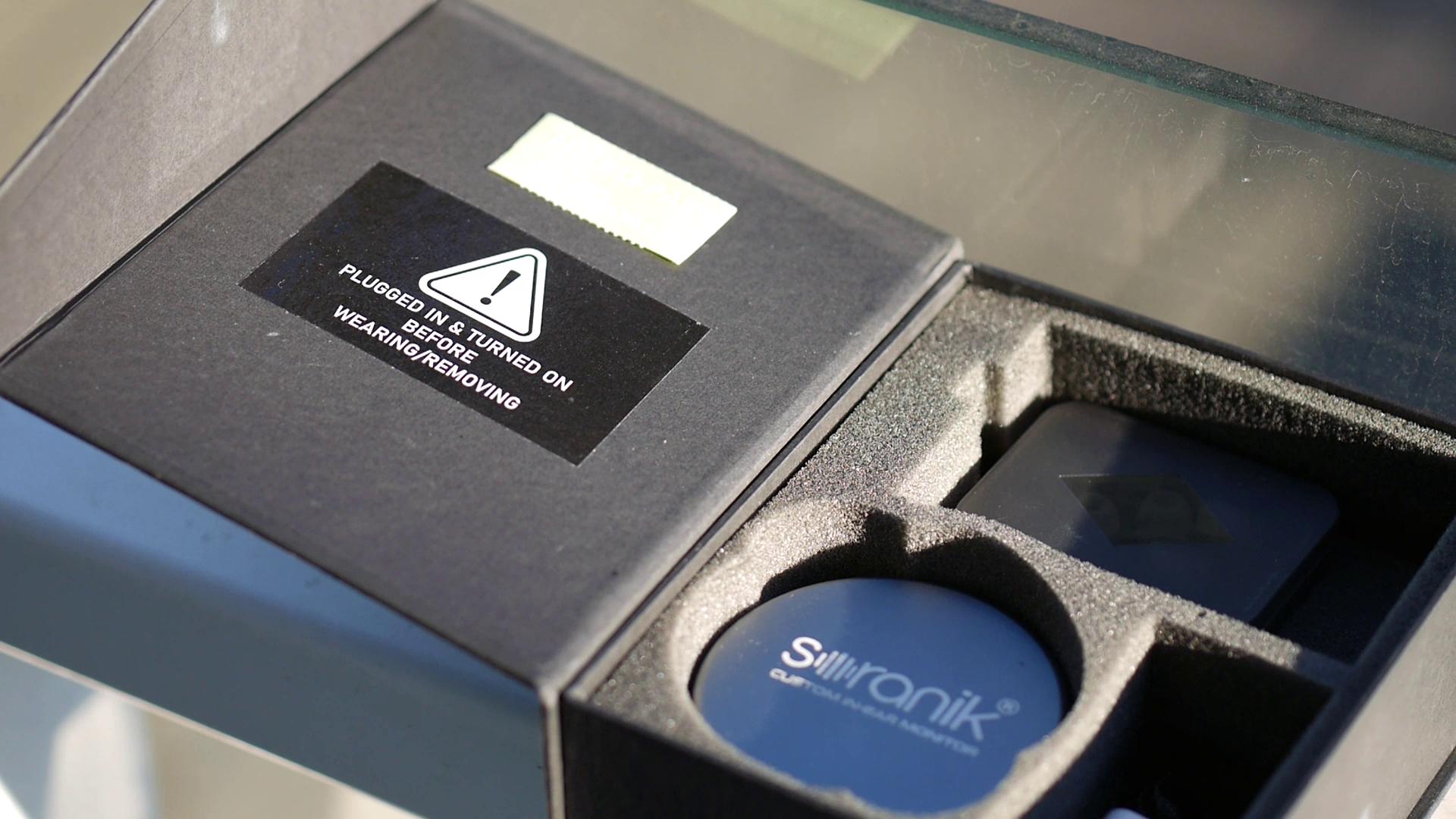
Due to the high voltage involved in operating MEMS-3, you need to follow the safety procedure outlined by Soranik. In particular, you need to ensure that everything is properly powered on and plugged in and turn the volume to a low level before wearing the IEMs. Personally, I also ensure that the audio content starts properly before putting the IEMs near my ears to avoid any software mishaps. That said, there is still somewhat unease feeling when using MEMS-3, which I expect would pass with prolonged exposure.
Non-sound Aspects
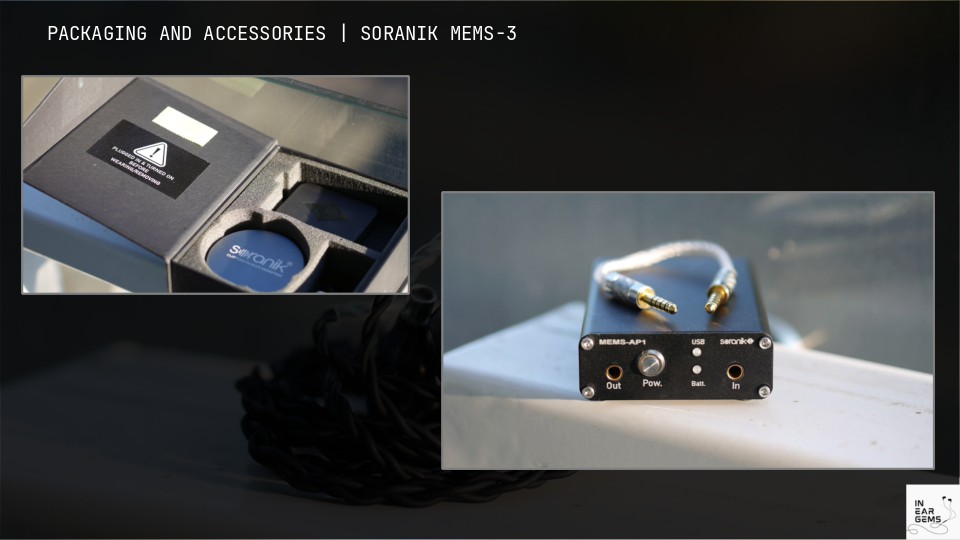
Soranik was not very fancy with the packaging. However, they supply MEMS-3 with a generous accessory pack, including a metal puck case that actually fit the IEM and cable. The included cable has a rubbery coating that feels somewhat annoying at first, but I quickly grew to like the cable due to how soft and easy to handle it is.
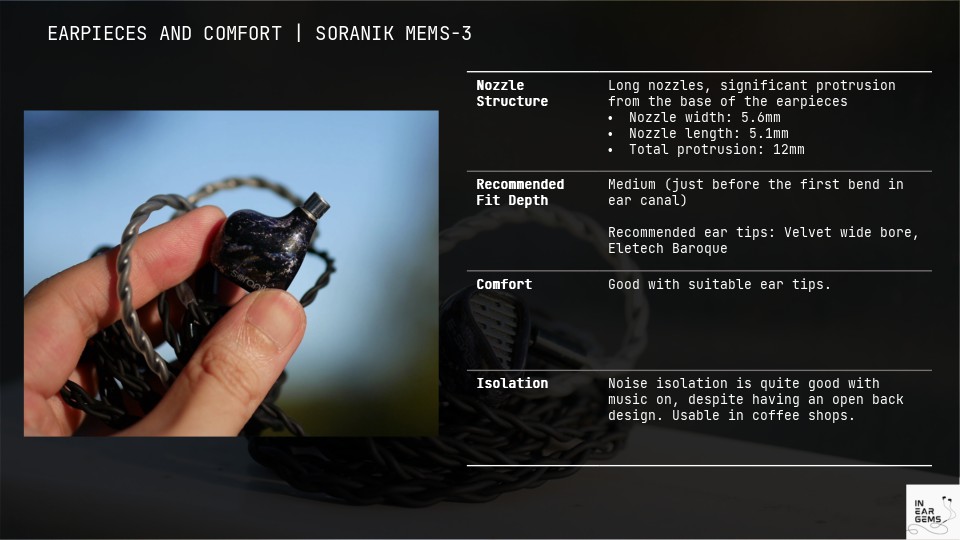
MEMS-3 earpieces are very well built. I have never seen the pattern of the resin in any other IEMs, and the finishing of the earpieces is flawless. The only problem here is the length of the nozzle, which makes a deep and stable fit impossible. The best I can do is to use shorter ear tips like Eletech Baroque to reach a medium fit, and let the rest of the earpieces sitting away from the concha. This fit reminds me of some of older Jerry Harvey IEMs, and that’s not a good memory. That said, with Baroque tips, I can listen to this IEMs for hours without getting ear fatigue.
Sonic Performance
Timbre and tonality:
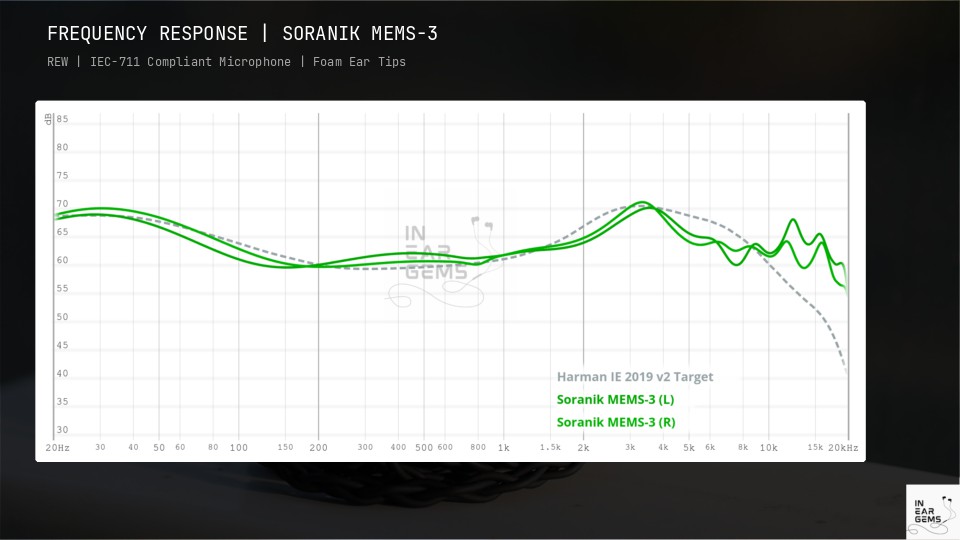
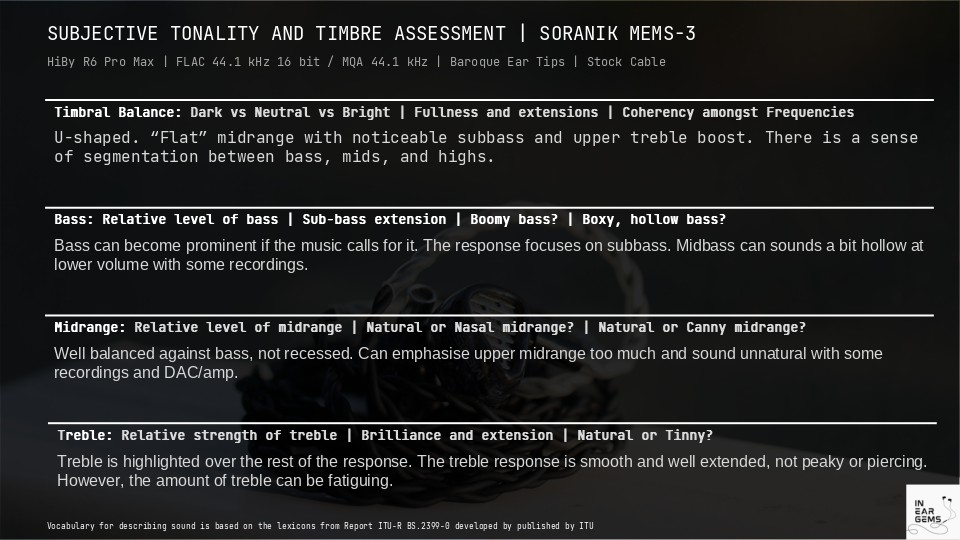
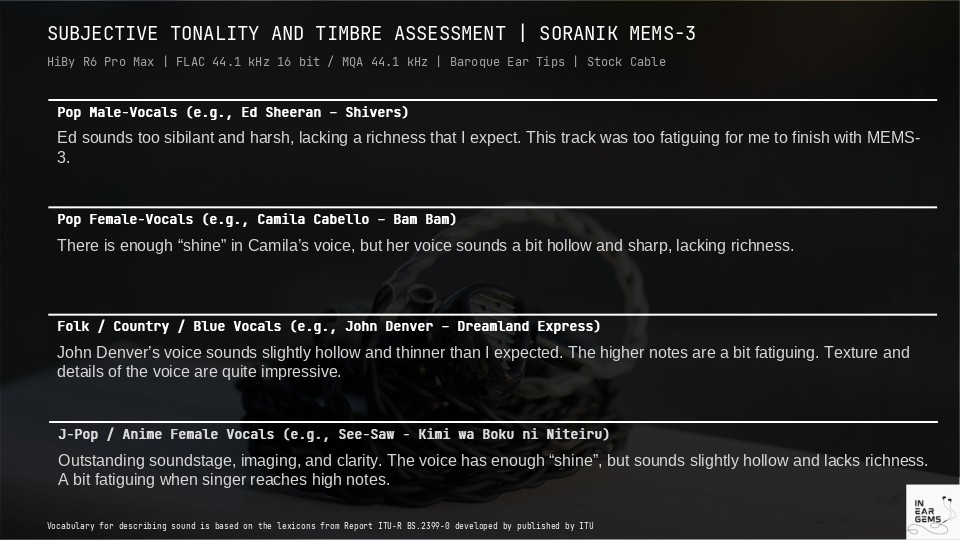
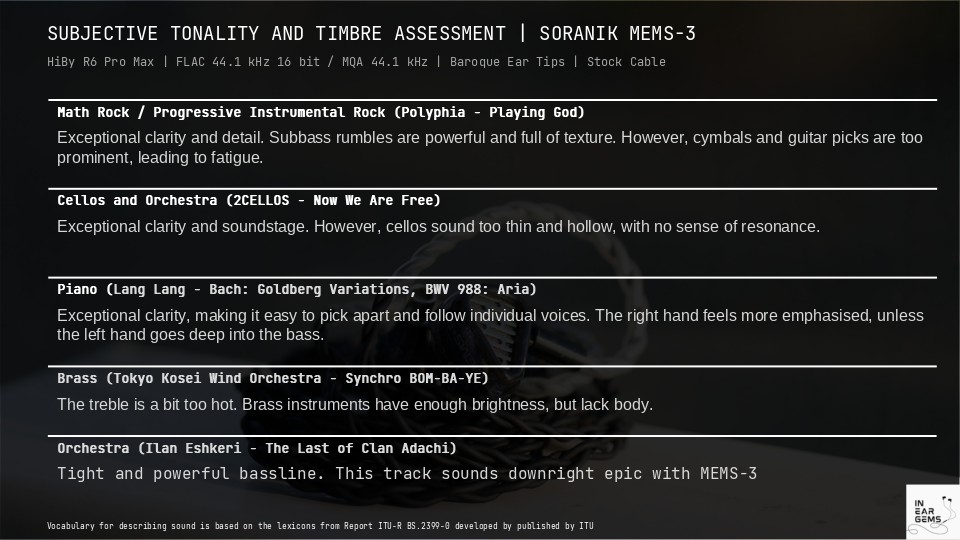
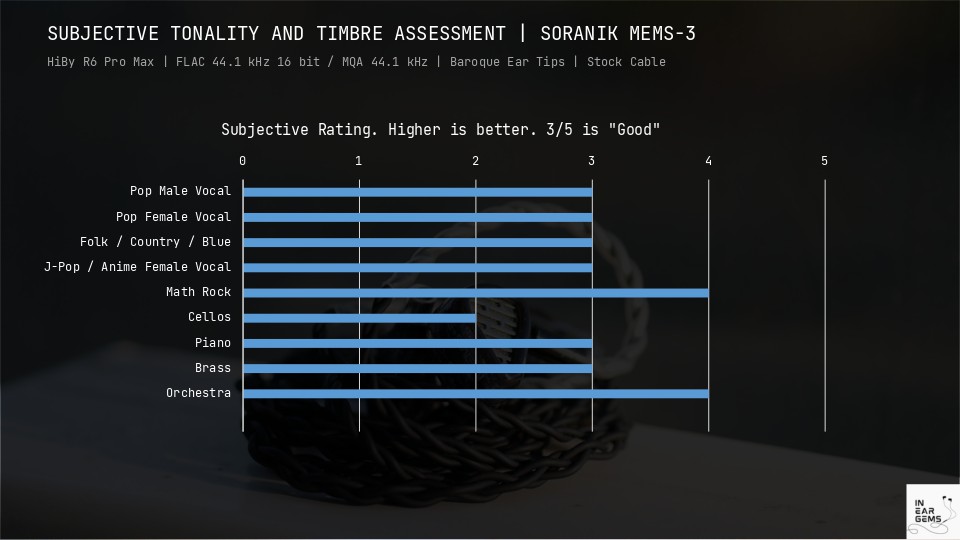
MEMS-3 has a U-shaped sound signature that looks really nice on the graph, with tightly tucked bass shelf, flat by-the-book midrange, and well extended yet smooth treble. Yet, the actual listening experience where these parts fit together was less than ideal, at least with some parts of my library.
MEMS-3 does a great job with more energetic, “epic” orchestral recordings such as from video game soundtracks. Where it really struggles (or at least were I really struggle with this IEM) is vocal music and acoustic recordings. I found that these problems boil down to three issues:
- The bass shelf is tucked way too far, leading to a deficit in the lower midrange and mid-bass region. It means cellos sound hollow. It also means attacks of kick drums can sound somewhat dulled, despite significant subbass rumble.
- The region around 1kHz, rising to 3kHz, is too recessed. Not only it hollows out the vocals, it also creates a strong contrast against the (proper) ear gain peak around 3kHz, which further intensifies the harshness of some vocals.
- The amount of treble is a few dB too high versus the midrange. Noted that the treble of MEMS-3 itself is rather high quality with great details and no harsh peaks or dips. It’s just the total amount of treble can be rather overwhelming.
“You talk a lot, show me what you got!” you might say. I have created a PEQ to address these short-comings and I found MEMS-3 becomes much more enjoyable with this profile. Interestingly, the response after EQ seems to align, in principles, with the response of Soranik flagship model MEMS-3S.
(I will update this article with the PEQ profile after extracting it from my DAP)
Percussion, Bass, and perceived dynamic:
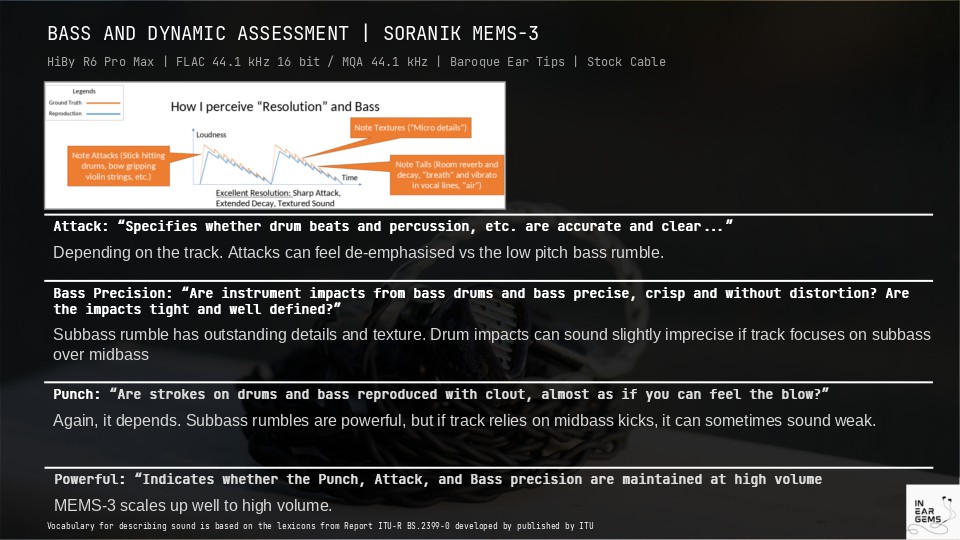
MEMS-3 has a sub-bass focus response with all the pros and cons of this bass tuning. When you listen to sub-bass content, you will be impressed by the power and control of the sub-woofer. And then you will find some tracks unusually hollow if they rely on mid-bass kicks instead of sub-bass rumbles. That said, the sub-woofer is highly capable and responds to EQ well. If you boost the mid-bass by a few dB, you can have the best of both worlds.
Resolution:
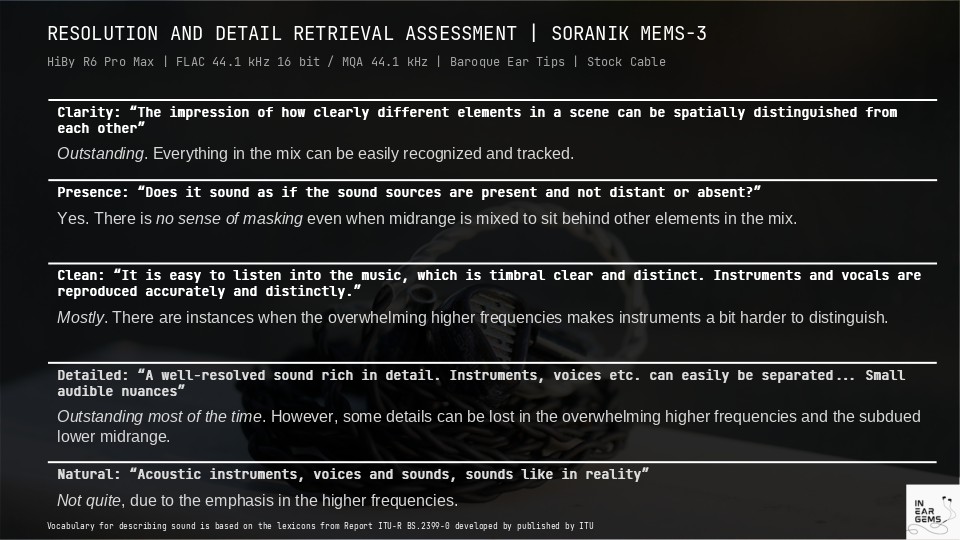
In one word: outstanding. Everything has a precise place on the soundstage, and nothing masks anything else. You can listen down to the most minute details that your DAC can pulls out. This characteristic also makes MEMS-3 an interesting IEM to test and compare different DAC and amplifiers.
Stereo imaging and soundstage:
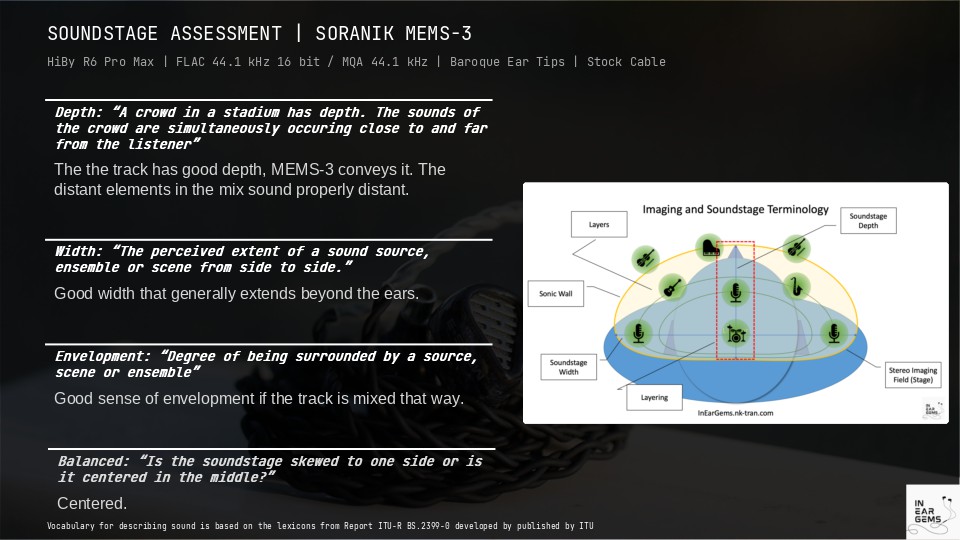
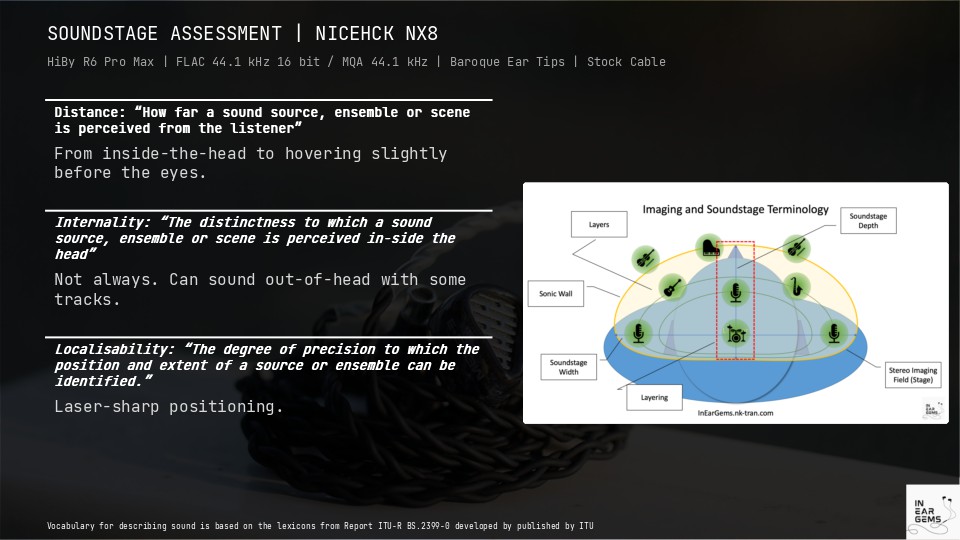
Imaging and staging are other areas where MEMS-3 impresses. Surprisingly, the open-back design does not sound that “open” to me. Despite this “limitation”, MEMS-3 still convey a great sense of space and capable of casting background, distant elements in the mix into the distant around me. Live recordings with real audiences are a treat with this IEM.
Conclusions
What I like about this IEM:
- Outstanding resolution, details, and imaging precision
- Great dynamic (with the right track)
- Great subbass rumble and texture
What could be improved:
- Tonality needs further refinement
- The need for a separate energizer unit
